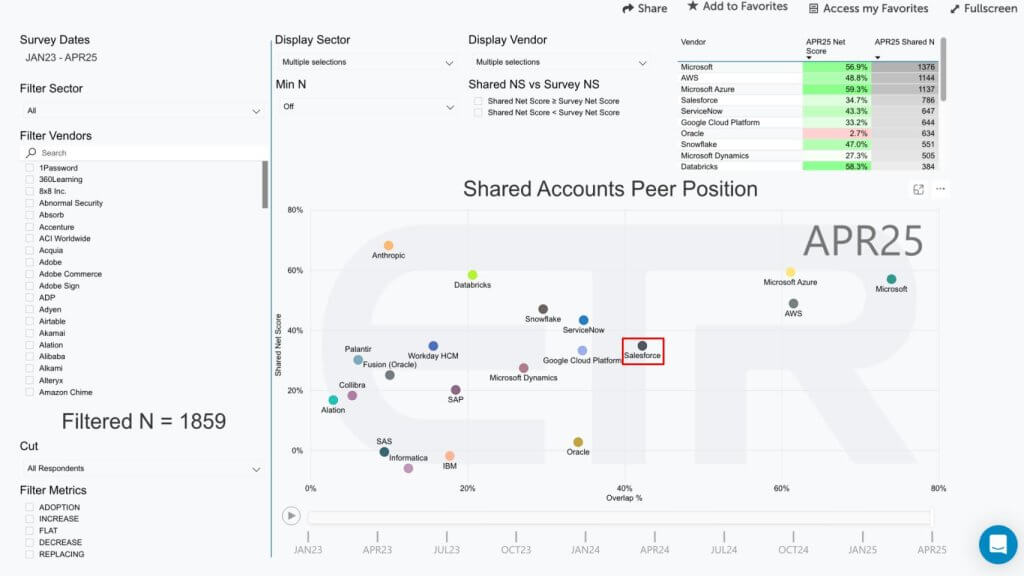Salesforce's AI and Data Strategy Paving the Way for a Software-Centric Hyperscaler
Salesforce's Agentforce and Data Cloud initiatives outline a transformative vision for enterprise software, positioning the company as a leader in AI-driven digital agents and unified data architecture.
Salesforce Inc. CEO Marc Benioff has articulated a transformative vision for enterprise software, centered around AI-driven agents and a unified data architecture. In an exclusive interview with theCUBE, Benioff outlined how these technologies will evolve SaaS into what he calls "service as software," where digital agents augment every business process.
Agentforce: The Rise of AI-Driven Digital Labor
Agentforce is Salesforce's platform for AI-driven enterprise agents, designed to work alongside human employees. Benioff claims early adopters, including Disney, are already seeing significant productivity gains. For example, Disney uses AI agents to personalize theme park experiences by tapping into real-time data on customer preferences and ride availability.
- Productivity Claims: Benioff asserts productivity increases of up to 50% in engineering, services, and support functions.
- Revenue Traction: Agentforce has enrolled over 5,000 organizations, with 3,000 on paid tiers, contributing to a near $1 billion annualized run-rate revenue for Salesforce's Data Cloud and AI portfolio.
Data Cloud: The Foundation for AI Success
Salesforce's Data Cloud serves as the backbone for its AI ambitions, unifying data from both Salesforce applications and external sources like Snowflake and Databricks. This "4D data engine" enables AI agents to access and act on governed data seamlessly.
- Interoperability: Salesforce has built bidirectional data sharing with Snowflake and Databricks, allowing AI agents to query external data without duplication.
- Governance: Benioff emphasizes that data governance remains intact, ensuring compliance even as AI agents access sensitive information.
The Software-Only Hyperscaler Ambition
Salesforce aims to become the first "software-only hyperscaler," leveraging its Hyperforce infrastructure to deploy globally on public clouds like AWS. This strategy avoids the capital intensity of traditional hyperscalers while delivering similar scale and influence.
- Economic Advantage: Salesforce's $50 billion revenue contrasts with the $300 billion capex spent by major cloud providers, highlighting its asset-light model.
- Competitive Landscape: The company faces stiff competition from Microsoft, which promotes a closed, vertically integrated AI ecosystem.
Challenges and Opportunities Ahead
While Salesforce's vision is compelling, challenges remain:
- Pricing: Seat-based pricing models may need reevaluation as AI agents become more pervasive.
- Competition: Rivals like Microsoft, Oracle, and SAP are also investing heavily in AI-driven agents.
- Execution Risk: Success depends on seamless integration with external data platforms and delivering tangible ROI for customers.

Conclusion
Salesforce's Agentforce and Data Cloud initiatives position it at the forefront of the AI-driven enterprise software revolution. With strong early adoption and a clear vision, the company is well-placed to redefine hyperscale economics—without owning a single data center. However, the next 12-24 months will be critical in determining whether it can outpace competitors and deliver on its ambitious promises.
Photo: Mark Albertson/SiliconANGLE
Related News
AWS extends Bedrock AgentCore Gateway to unify MCP servers for AI agents
AWS announces expanded Amazon Bedrock AgentCore Gateway support for MCP servers, enabling centralized management of AI agent tools across organizations.
CEOs Must Prioritize AI Investment Amid Rapid Change
Forward-thinking CEOs are focusing on AI investment, agile operations, and strategic growth to navigate disruption and lead competitively.
About the Author

Alex Thompson
AI Technology Editor
Senior technology editor specializing in AI and machine learning content creation for 8 years. Former technical editor at AI Magazine, now provides technical documentation and content strategy services for multiple AI companies. Excels at transforming complex AI technical concepts into accessible content.